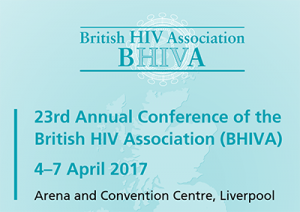Prompt/early ART: Dean Street pilot project reports 75% uptake
24 April 2017. Related: Conference reports, Antiretrovirals, BHIVA 23rd Liverpool 2017.
Simon Collins, HIV i-Base
Several studies reported successful results from new testing initiatives, and importantly, a new model for early access to ART.
The most important of these was from a pilot study at 56 Dean Street to routinely offer ART in the same week that someone is diagnosed. This service is closely based on the model developed in San Francisco that has become routine care for all patients.
Gary Whitlock presented an update from 56 Dean Street clinic in London, which has the highest number of annual HIV diagnoses. Since July 2016, the clinic restructured services so that people with newly diagnosed HIV could have a first medical review within 48 hours compared to within two weeks. The protocol included offering immediate PI-based ART (prescribed as TasP), changing from the PI as soon as resistance test results confirmed this would be safe.
A retrospective case note review was presented for 127 individuals, all gay men, diagnosed during the first five months of this service. Approximately 60% were retesting and 40% were first patients.
Mean age was 34 years with median baseline CD4 and viral load of 466 cells/mm3 (IQR: 310 to 578) and 72,000 copies/mL (IQR: 24,000 to 290,000), respectively. Just under one-third (29%) had a CD4 count <350 cells/mm3 and half were recent infections (< 4 months based on RITA testing).
Notably, 14% had viral load > 1 million copies/mL indicating likely very early infection. Also a concern, 24% (28/118) had transmitted drug resistance. This included 11 samples with primary PI mutations (L90M, n=9; M46l, n=2) and 9 with primary NNRTI mutations (E138A, V179E, n= 3 each; V179D, n=2; and K103N, n=1). Six samples included two or more mutations.
Of 127 new diagnoses, 11 had no further follow-up (5 moved away, 6 lost to follow-up) and 118 attended first doctor appointment, all were offered ART. Of these, 76% (89/118) started ART at their first doctor appointment. Of those starting ART at first appointment, 31% (28/89) did so within two days of diagnosis. Of those not choosing immediate ART, most (26/29) had started by January 2017.
Although PI-based ART was recommended, only 62/115 (54%) started with a PI, including seven people who were later found to have significant PI mutations. Other combinations included integrase-based (n=33, 29%) or NNRTI-based (n=12, 10%) ART.
Of both measure of time to first appointment and time to starting ART, the pilot programme was significantly shorter than historical control data from the same clinic a year earlier (both p<0.05).
Comment
Part of the success of the San Francisco same-day ART is likely to be linked using integrase-based ART for the first combination, based on lower risk of side effects.
The resistance results from Dean Street would further support using integrase-based ART, given very low risk of transmitted integrase resistance and the high barrier to developing drug resistance, certainly with dolutegravir.
This approach to shortening time between diagnosis and seeing a doctor could easily become the model of care across the UK, and high uptake of early ART from this relatively informed treatment-aware patient group probably minimises the anxiety and stress associated with learning you are HIV positive.
Reference:
Whitlock G et al. Rapid initiation of antiretroviral treatment in newly diagnosed HIV: experience of a central London clinic. 23rd BHIVA 4-7 April 2017, Liverpool. Oral abstract O14.
https://www.bhiva.org/file/QpTjibLZUaFzD/GaryWhitlock.pdf (PDF)
http://www.bhiva.org/170406GaryWhitlock.aspx (webcast)


